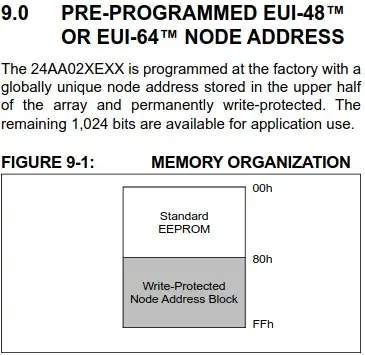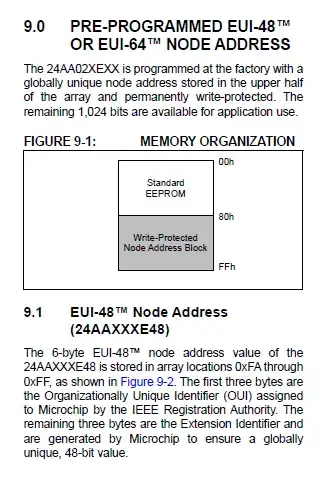The device is unambiguously described as a 128 x 8 "standard" EEPROM + Unique ID EEPROM.
You might accuse Microchip of being confusing, but I don't see anything resembling a lie. It's 1 Kbit of EEPROM for you, and 1 Kbit used for the unique ID, a thing which is extremely useful for many devices. It's a 2 Kbit EEPROM with half preprogrammed with something extremely useful, which very often goes into EEPROM. It could save all the per-unit work of programming IDs. Being write protected at the factory prevents it ever getting changed even if desoldered from your board.
If you want a plain, empty, EEPROM, consider looking at 24AA02 without suffix, which at first glance appears identical except it's all writable, and has a write protect pin.
The moral of the story is always read the datasheet, including the part about the suffixes.
From -E48 datasheet, p14:

Plain Version
In fact, my guess is that the -E48 and -E64 is the same chip but with the WP connected to A7 internally, after they've programmed the unique ID. Microchip to classifies it as 2 Kbit EEPROM because it is a 2 Kbit EEPROM but a) conveniently pre-programmed with 6 (or 8) bytes of the ID, b) write protected ID. And, certainly, c) 250 (or 248) bytes "wasted" in the top write-protected half.
They also make 24AA024H which is the same but the write-protect pin protects the upper half only. Which would be useful for putting your own unique IDs or serial numbers in. Obviously you win the "wasted" portion of the top 256 bytes, but also it would be possible for it to be reprogrammed under some conditions.


